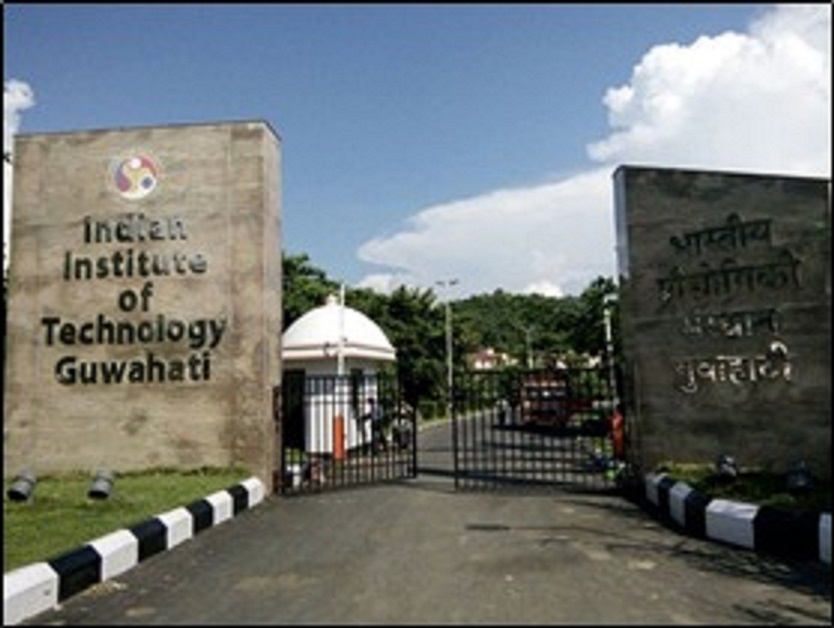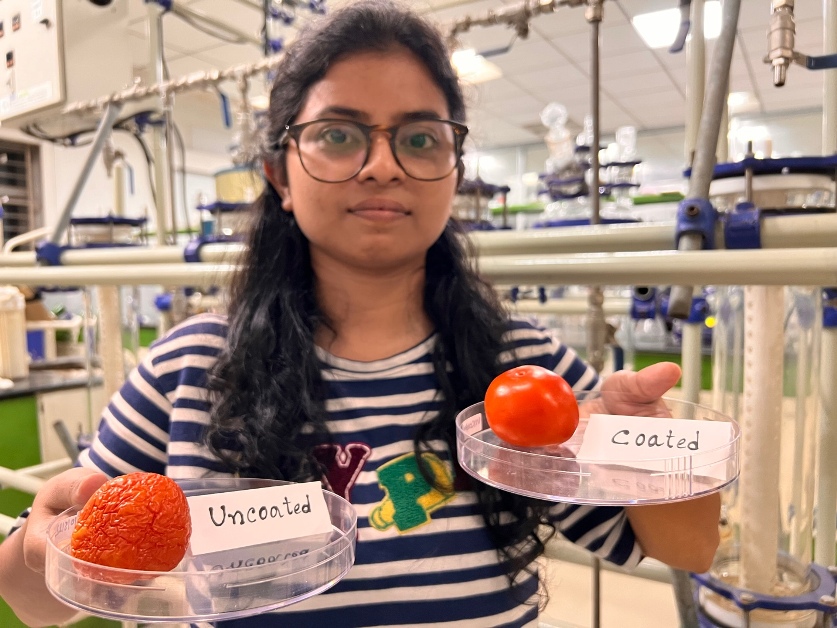It provides ways to utilize the ferromagnetic metal and metal-oxide nanocomposites as a positive triboelectric layer, suitable for energy harvesting device applications in daily life
 KRC TIMES Education Desk
KRC TIMES Education Desk

Researchers from the Indian Institute of Technology Guwahati, and Daegu Gyeongbuk Institute of Science and Technology (DGIST), South Korea, have developed ferromagnetic nanocomposites to be utilized as a positive triboelectric layer in triboelectric nanogenerator (TENG) suitable for energy harvesting device applications to harvest biomechanical energy from breathing (inhale and exhale) during standing, sitting, and bending positions.
Considering the abundant biomechanical energy in our daily life and its ubiquitous nature produced during human activities, the fabricated TENG device helps harvest the biomechanical energy to power up low-power electronics. The results of such novel approach work have recently been published in Nano Energy (https://doi.org/10.1016/j.nanoen.2021.106662) and Materials Letters (https://doi.org/10.1016/j.matlet.2021.131644), highly reputed journals in the area of materials science, and a few more exciting results are under communication.
The limited recycling process of batteries used in various electronic devices in today’s world causes a severe disbalance in the ecosystem due to the release of toxic materials and waste disposals, which eventually leads to global warming. Thus, it is essential to develop clean, green, and sustainable power resources befitting suitable alternatives to reduce the damage caused by batteries.
With this connection, the energy conversion devices like nanogenerators could effectively harness idle energy from wind, water waves, and biomechanical energy. The nanogenerators are generally categorized into electromagnetic, piezoelectric, pyroelectric, triboelectric, etc., depending on the energy conversion functionality and functionality with many applications like bio-robotics, defense, wearable electronics, micro-electro-mechanical systems, nano-electro-mechanical systems, etc. Among these systems, the triboelectric nanogenerator has emerged as an eco-friendly energy harvester for self-powered applications, in which the triboelectrification is responsible for generating the surface charges when two surfaces exhibiting different work functions come in contact or friction with each other. Typically, the materials generating surface charges are synthesized using a metal or polymer counterpart as the matrix component. These materials are also expensive and require obscured synthesis routes. Therefore, the alternative method of using the composites directly, as a triboelectric layer synthesized via a cost-effective fabrication route, can essentially extend the application.
In this work, the researchers have developed ferromagnetic metal and metal-oxide nanocomposites using a cost-effective mechanochemical reduction process in a high-energy planetary ball mill technique, and the biomechanical energy harvesting is demonstrated with the nanocomposites as positive triboelectric layers to elucidate the usage of the fabricated TENG in real-time applications its application. The high-energy planetary ball milling technique helps synthesize the ferromagnetic nanocomposites using the mechanochemical reduction process by highly reactive metals, leading to the thermodynamically favored solid-state reduction at the stoichiometric conditions (Figure 1). The original antiferromagnetic NiO was reduced into Ni-rich ferromagnetic nanosized metals dispersed in resulting oxide phases depending on the choice of the reactive metals. These nanocomposites provide excellent thermal and chemical stability, extreme sensitivity to change in the composition and structure, accessible mode of fabrication, and multifunctional behaviors. Interestingly, the oxygen vacancy in the nanosized oxides is electrically positively charged, which is an essential factor that could contribute to the exchange and trapping of electrons when driving a TENG. As the active area of TENG devices increases, there is an increase in the surface area contact between two triboelectric layers during the contact and separation, leading to an increase in the charges developed on the triboelectric surface (Figure 1). The extracted voltage and current outputs demonstrate the harvesting of accessible electrical energy from biomechanical activities, which could effectively power the low-power electronic devices such as wristwatches and LEDs, etc.
Prof. Perumal Alagarsamy, Department of Physics, IIT Guwahati says, “The above results confirm the exploitation of ferromagnetic nanocomposites as positive triboelectric layers and the extension of triboelectric series. Furthermore, considering the large change in the magnetic properties of the nanocomposite upon applying the applied magnetic field may improve the TENG power output performance, which is currently under investigation for further improvement.”

Figure: The development of ferromagnetic nanocomposites using mechanochemical process by high energy planetary ball mill. (a) room-temperature XRD patterns and magnetic hysteresis (M-H) loops; (c-d) voltage-current for the bulk NiO and NiO-Ti as positive layers and copper, PET sheet, and Kapton as negative layers; (e) biomechanical energy harvesting during human motions; (f) powering of wristwatch and green LEDs.
Advertisements | 5E For Success

KRC Career Membership Program is the first step towards an evolved career-building support system powered by KRC Foundation. Ideal for students and job seekers. Mail resume to- 5eforsuccess@gmail.com WhatsApp: 9531090090





